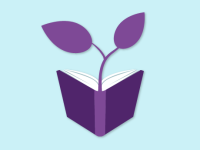Summer Readings on Differentiation: 150+ Seedlings for Growing Stronger Learners
Dig into this bountiful reading list as you plan your garden of differentiated instruction methods and strategies for the coming year.
Sir Ken Robinson made the analogy that "Teachers are like gardeners." Gardeners cannot make the plants grow, but they do prepare and nurture the conditions that enable plants to thrive. Robinson explains that great teachers do the same by providing the support necessary for each student to grow in his or her learning.
In Steve Jobs' 2005 commencement speech to Stanford graduates, he encouraged the value of exploring passions and interests, because you never know where they might lead. Jobs once took a calligraphy class, which years later inspired the many font options we have today (including the words you're reading now).
The time between the end of one school year and the beginning of the next is a season for reflection and renewal. It's important to celebrate student successes and recall challenging times when things just didn't go as planned. This season between school years is an opportunity to plan for new and modified instructional approaches to increase learner success. What follows are suggested readings and resources for developing and deepening your practice to meet the diverse needs of all learners. The readings are grouped from easy starts to deeper complex implementation. Like Steve Jobs, feel free to choose what captures your passion.
Preparing the Soil
All educators differentiate within the moments of instruction. Only when we step back can we make that invisible practice visible. Here are resources to build vocabulary for what occurs in instruction. Preplanning intentional differentiation is like preparing the soil -- learners, like plants, will thrive under conditions suited to their needs.
- Carol Ann Tomlinson's Fulfilling the Promise of the Differentiated Classroom: Strategies and Tools for Responsive Teaching is worth reading. Her more recent book is also good, but I find that the message of Fulfilling the Promise strikes the best balance between pedagogy and practical ideas.
- The Best of Corwin: Differentiated Instruction, by Gayle Gregory, provides a collection of practical ideas and strategies.
- Edutopia on Differentiated Instruction: Dive into the many articles and videos offered. It's amazing how many ways that quality instruction can be differentiated to meet all students' needs.
- ASCD offers an infographic on what differentiation is and is not (PDF).
- Follow #DI4ALL for ongoing dialogue about differentiation culture and strategies to support all learners. Their chat schedule is available on their website.
Plant Care: Watering and Fertilizing
Effective differentiation begins and ends with assessment for learning. Fair assessment that targets academic learning for all students can be challenging. A starting point to exploring the many voices on this topic begins with Assessment Through the Student’s Eye by Rick Stiggins. The article provides the right conditions for growth to occur. Read Stiggins before choosing from the following material for strategies to weed out the obstacles that might be in the way:
- Rick Wormeli's Fair Isn't Always Equal is a great pairing with Ken O'Connor's How to Grade for Learning, K-12.
- #SBLChat (Standards-Based Learning) is a movement of educators concerned with fair assessments for learning.
- Edutopia on Formative Assessment: Explore the wealth of ideas from educators of all areas and levels, including these 56 examples and their video library.
- Here are an additional 40 Alternative Assessment Ideas for Learning.
- Read this blog on Authentic Assessment Practices by Dayna Laur.
Making Cuttings and Transplanting in New Soil
As with gardening, conditions that work for some students may do little for others. Sometimes we need opportunities to grow in new and different ways to find additional strategies for handling diverse situations. One approach is to explore familiar ideas from a different lens, such as Classroom Instruction That Works: Research-Based Strategies for Increasing Student Achievement, 2nd Edition. These strategies provide a frame through which we can support and challenge all students toward growth. Using a variety of these frames leads to strategic differentiation of learning. Following is a list of other resources that inspire new and different thinking to explore how students can address and process learning concepts:
- 50+ social media tools to explore for differentiated learning
- Differentiating math resources by Jennie Allan
- Blog on differentiation strategies by Charity Stephens
- Instructional Technology and Outside the Box Thinking (award winning) by Michael Gorman
- Two classroom blogs that model blended ways to support learning:
- Byron 5th by Matt Weyers and Jen Dole: View their PBL journey in a compelling series.
- just teach (award winning) by Erin Gannon: View her learners' experiences via STEM PBL.
Gardening Is Zen Time
Summer renewal is a chance to reflect on practice and deepen understanding to improve growth of the learner experience. As you follow your summer reading list, consider the following reflective questions:
- What concepts and strategies will make the learner experience even more supportive and inviting to students?
- How can I shift from teacher-friendly structures to primarily learner-friendly structures?
The resulting answers might not be new ideas, but they can liberate you to explore deeply what we are most passionate about in education: students.
In the comments section below, share your reflections from the readings suggested here. You can also reach me via Twitter. I promise to join the dialogue about your thoughts and questions. As you prepare for the upcoming school year, may you have a rejuvenating time for planning (and planting) more powerful learning conditions.
